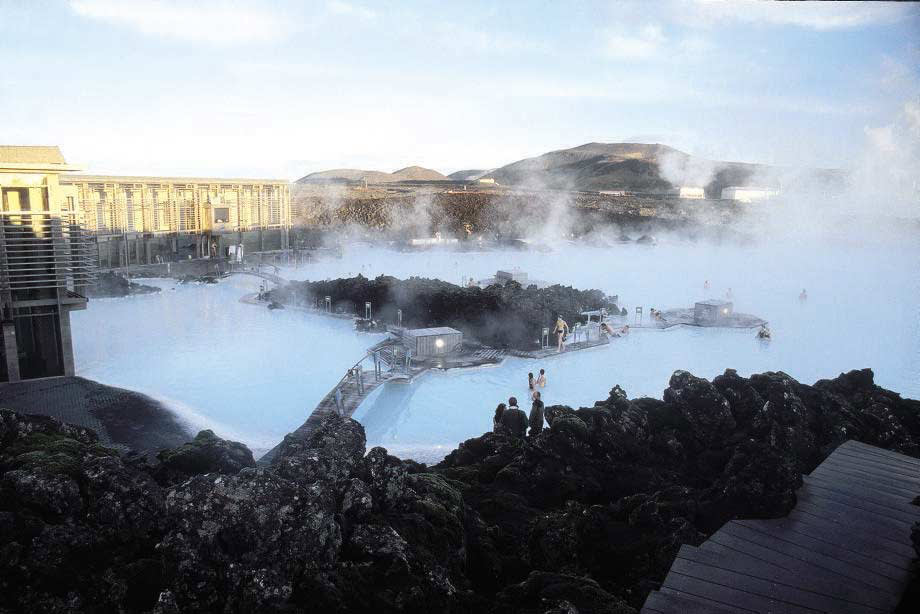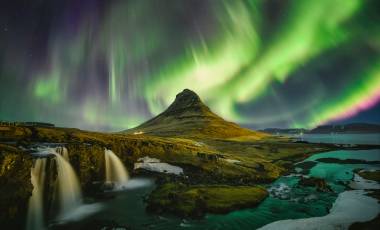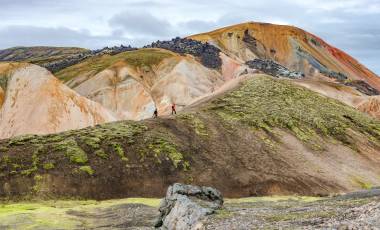Read time – 2 minutes
After travelling across the moon-like landscape of the Rekjanes Peninsula we headed to the south coast. As the dark Icelandic landscape of lava gave way to green pastures we spotted some Icelandic horses, unique for their five gaits.
A word of warning though: don’t refer to them as ‘ponies’ or the locals might get upset! These diminutive steeds could be likened to the big brother of a Shetland pony with an 80’s hairdo.
Glaciers, Geysers and Waterfalls
Our first stop was Solheimajokull Glacier for a spot of glacier walking and to try our hands at ice climbing. From the top, we had an awesome vantage point from which to see along the south coast and to the Vestmannaey Islands. We could just make out the Surtsey Islands which were formed from a volcanic eruption at about the time The Beatles were making it big in the UK; new rock of different kinds.
On reaching sea level again we stopped at Skogar to see the jaw-dropping waterfall. In winter, the spray from the water forms sculptures of ice which frame the falls while in summer the sun shining through the spray creates dancing rainbows – entrancing at any time of year.
Hiking higher in the mountains for even better views, we descended to walk along the jet-black volcanic sand beach. The white surf racing up the black sand made the landscape rather surreal and one could easily start to believe in the existence of the ‘hidden folk’ – elves, gnomes, fairies and the like. Such beings are best left undisturbed; contractors in Iceland will often employ the services of a folklorist to make sure they don’t accidentally build on top of their hidden lairs for fear of upsetting the inhabitants.
The Golden Circle
Many a road has been re-routed as a result. Iceland’s so-called ‘golden circle’ contains the three most visited sites in the country. The first of these is Gullfoss, a huge torrent of water forming an impressive, double waterfall. It is Europe’s most powerful waterfall and it’s hard not to be moved as the thundering water rattles your rib cage.
Not far away is the second; the many fault lines which cross Iceland form a diagonal line of volcanoes and also give rise to one of the world’s most reliable spouting geysers. Strokkur erupts boiling water up to 35m in the air once every eight minutes. The original geyser next to it (now only putting on a show at irregular intervals) is Geysir – an Icelandic word that the rest of the world has adopted to describe the geological phenomenon.
The last part of the triangle is Pingvellir, the site of the world’s first democratic parliament that was formed here in AD930. The join in the tectonic plates can be seen very clearly from this UNESCO World Heritage Site where the original settlers of Iceland used to gather yearly to hold court and discuss important matters.
Things to do in Iceland
A trip to Iceland in whatever season you choose offers many options. Clean, unpolluted air combined with miles of open space offers numerous hiking and winter sports opportunities. The fact that the country runs along the join of two tectonic plates means that there are plenty of geothermal hot spots; as well as forming the backbone of the country’s power they also warm its many swimming pools.
After all the fresh air and exercise, a dip in a hot spring is a must. The Blue Lagoon spa well deserves its place as the iconic image of the country with its large expanse of bath-water warm turquoise, mineral-rich water. Less strenuous but no less exciting activities include whale watching, horse riding and snowmobile driving.
With an over 95% chance of spotting whales, it’s one of the best places in the world to do this. When boarding the flight to leave Iceland, all the ladies were presented with a rose for Woman’s Day. This gesture typified the country and the people. They don’t forget the little details! – By Andrea Beech, Sales Consultant who recently travelled on Glaciers, Geysers & Waterfalls
Browse our trips below and set off on an Iceland adventure.
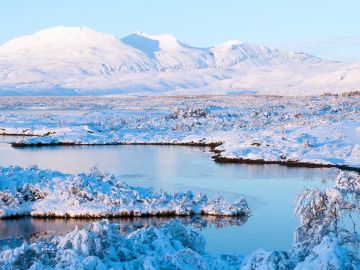
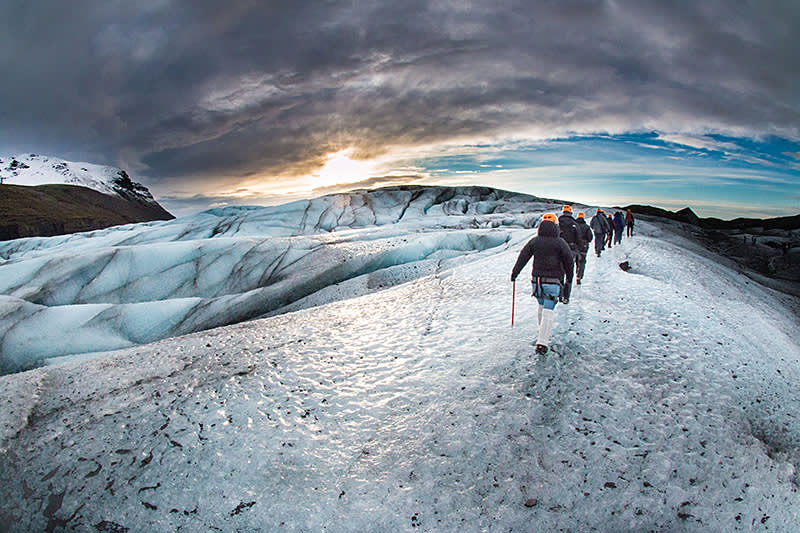 Glacier walking
Glacier walking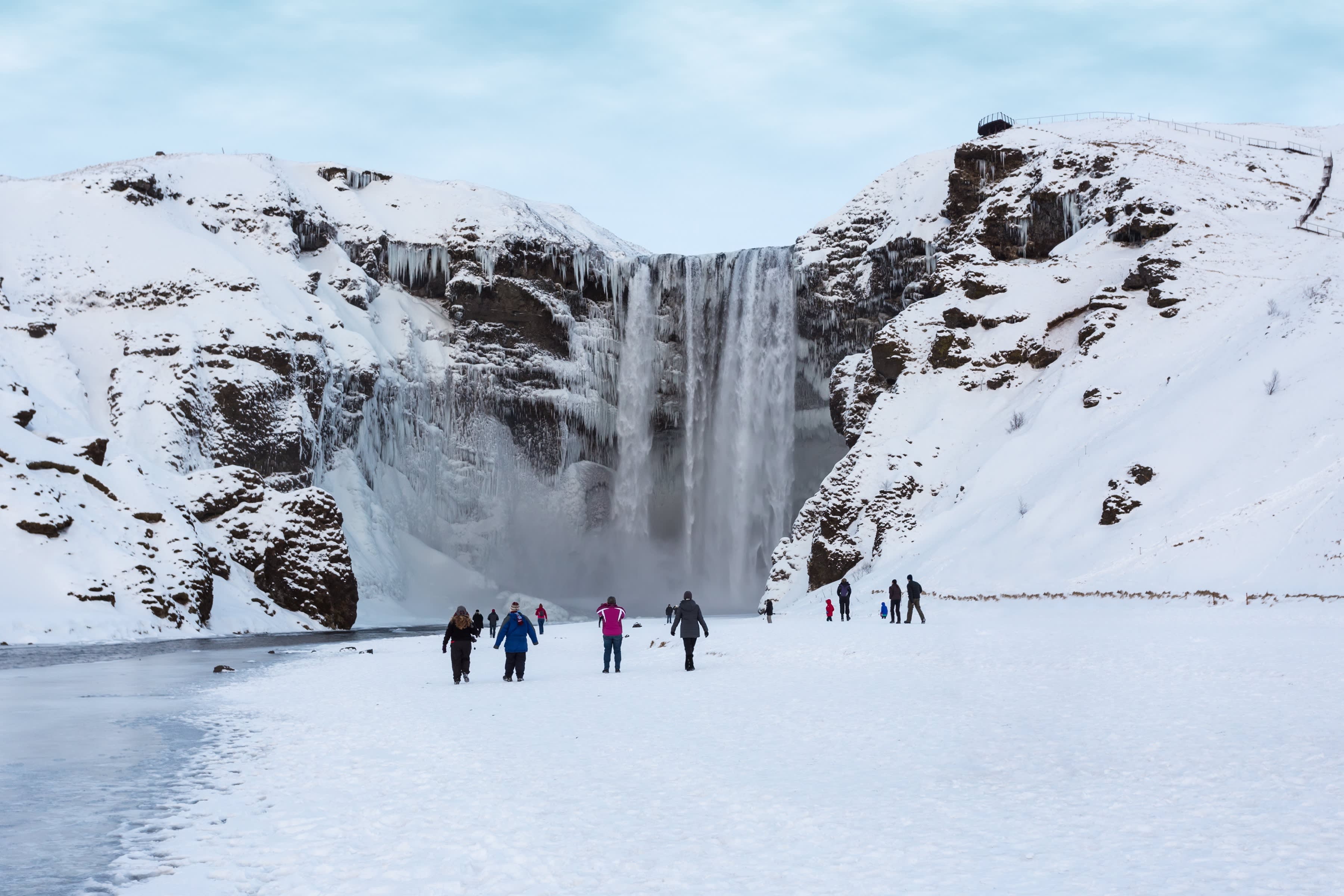 Iceland waterfall
Iceland waterfall